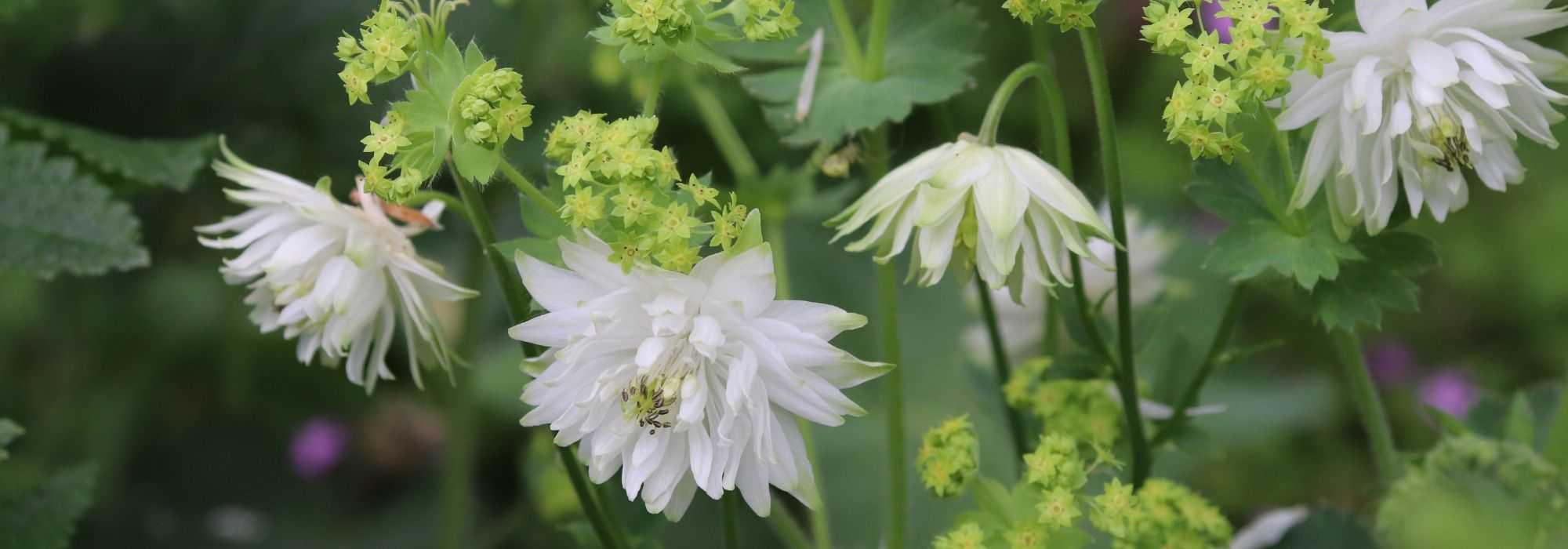
Columbine: 5 ideas for successful plant combinations
Plant combinations for garden or in pots!
Contents
Columbines (Aquilegia) are perennial plants with generous spring flowering, essential for bringing a natural look and lightness to borders and even in pots. Easy to combine, they offer a varied palette of colours and different shapes. Their foliage is also decorative and adds an interesting graphic touch.
They are really easy-to-grow, hardy and robust plants, ideal for beginners and perfect for filling gaps in borders or disguising yellowing foliage of early bulbs. Discover our ideas and inspiration to combine columbines!
Columbine in a romantic or country setting
Garden columbines, especially double forms and the famous “Granny’s Bonnet”, lend themselves well to charming, romantic settings. Pair them with English roses with very double, pastel-coloured flowers or with peonies. They work very well together. Add perennials (alchemilla, bellflowers, hardy geraniums, euphorbias, catmint, salvias, poppies, etc.) and ornamental alliums or camassia bulbs.
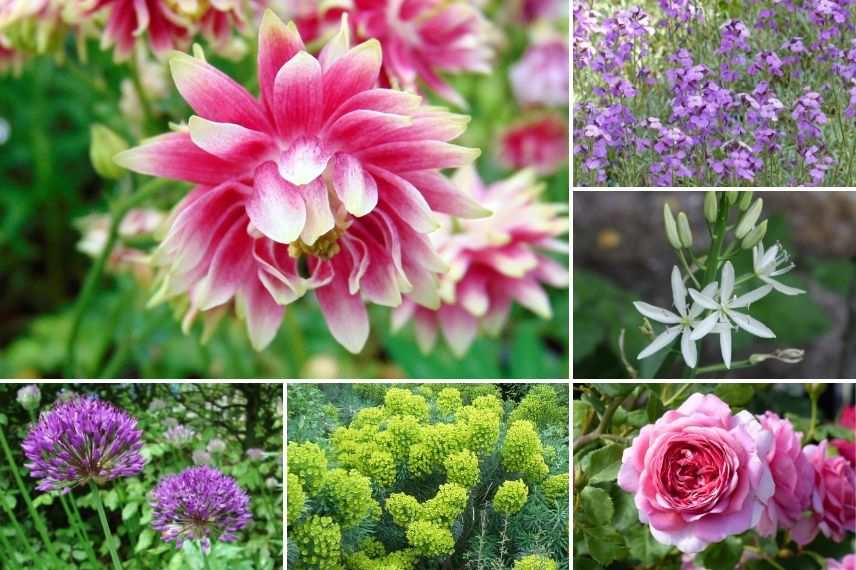
A romantic pairing idea: Aquilegia ‘Nora Barlow’ (or ‘Clementine Salmon Rose’, Erysimum ‘Bowles Mauve’, Camassia leichtlinii ‘Alba’, Rose ‘Princess Alexandra of Kent’, Euphorbia characias ssp. wulfenii and Allium aflatunense ‘Purple Sensation’
You can also use them to complement flowering in front of bushes that are in bloom at the same time such as Mexican orange blossom, Van Houtte spirea, lilacs, certain viburnums (‘Mariesii’, ‘Watanabe’…), camellias, etc.
Columbine in a naturalistic border
Columbines are delicate, light flowers, which makes them easy to include in a naturalistic planting. Especially since this kind of planting is often a bit bare in spring. Choose columbines that aren’t too sophisticated, such as Aquilegia vulgaris, and let them self-seed as they wish to reinforce the natural look. Pair them with grasses such as evergreen Carex and other naturally appearing plants with spring flowering (hardy geraniums, mulleins, buglosses, Baptisia, centauries…) or spring bulbs (Alliums, Camassia, fritillaries…).
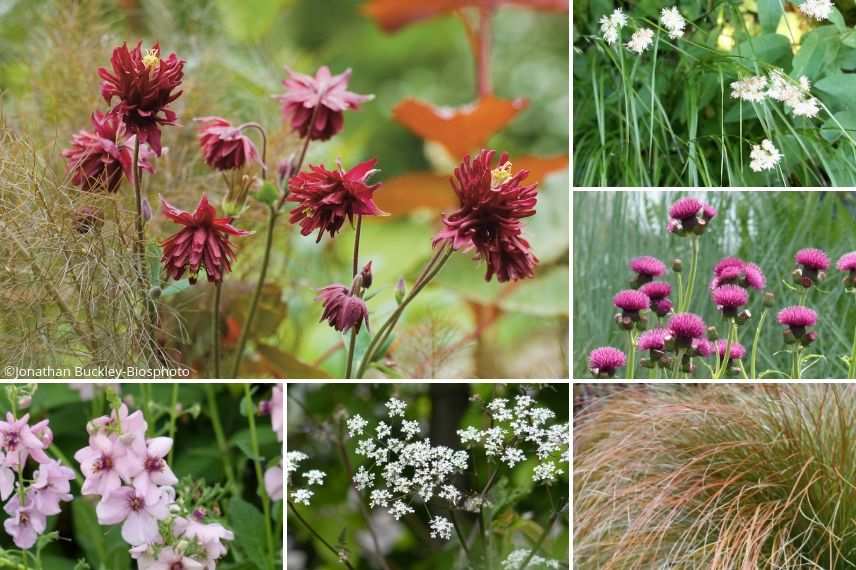
A naturalistic planting idea: Aquilegia ‘Ruby Port’ and Foeniculum ‘Bronze’, Luzula nivea, Cirsium rivulare ‘Atropurpureum’, Carex testacea ‘Prairie Fire’, Anthriscus sylvestris ‘Ravenswing’ and Verbascum ‘Rosie’
Finally, you can also create a colour gradient (various shades of blue or pink) by pairing columbines together.
Discover other Aquilegia
View all →Available in 0 sizes
Available in 0 sizes
Available in 1 sizes
Available in 0 sizes
Available in 2 sizes
Available in 1 sizes
Available in 0 sizes
Available in 1 sizes
Available in 1 sizes
Available in 1 sizes
Columbine for rock gardens
Certain species are ideal in a cool rockery: A. alpina, A. canadensis, A. chrysantha, A. atrata. Combine them with plants that prefer sunny, free-draining conditions while retaining a little moisture. You will find suitable choices among basket-of-gold, small campanulas, mountain sandworts, moss phlox, saxifrages, euphorbias, etc.
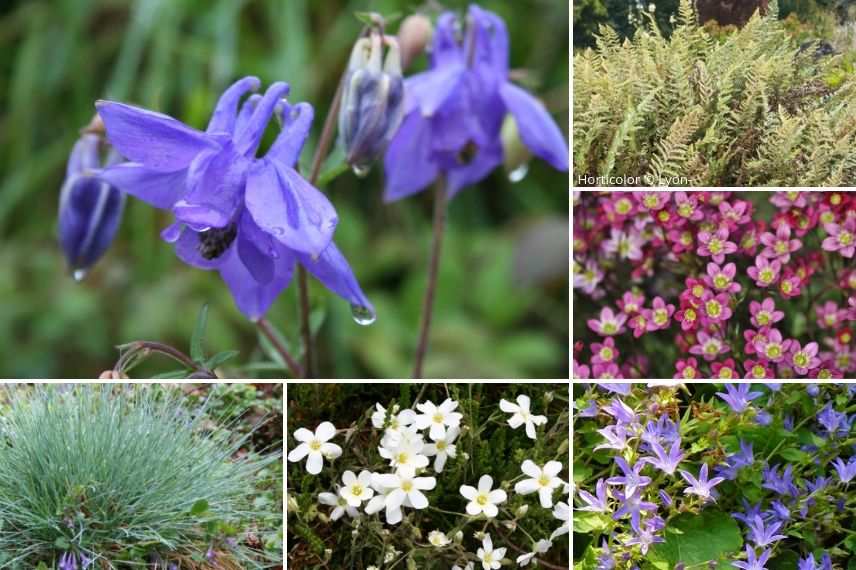
A rockery planting idea: Aquilegia alpina, Cheilanthes lanosa, Saxifraga arendsii (‘Pixie’ or other), Campanula poscharskyana ‘Stella’, Arenaria montana and Festuca glauca
Read also
Columbines: sowing, planting and careColumbines in the understorey
Comfortable in light woodland, columbines tolerate root competition well and create pretty, fresh and colourful displays in partial shade. In that case, plant them with ferns, hostas, heucheras and other perennial plants typical of shady spots. Remember to favour light colours to bring light and contrast to the medium of this cloak of foliage.

An understorey planting idea: Aquilegia ‘Snow Queen’ (or ‘Green Apples’, ‘Clementine White’, ‘White Barlow’ or ‘Munstead White’), Geranium phaeum ‘Album’, Hakonechloa macra ‘Aureola’, Hosta ‘Halcyon’ (or any other hosta would be perfectly suitable), Digitalis lutea and Matteuccia pensylvanica (or struthiopteris)
...or in a pot
If you only have a terrace or even a balcony, you can grow small columbines in pots. Just ensure the growing medium is rich, light and well drained. It should also remain cool, especially during prolonged dry spells. For an attractive display, pair these dwarf columbines with perennials with decorative foliage such as Brunneras, which will also produce delicate little forget-me-not flowers.
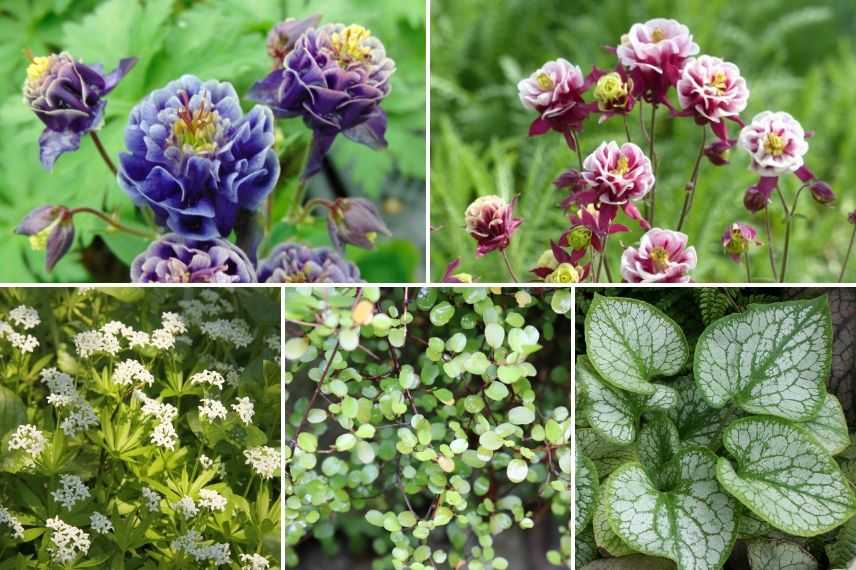
An idea for a potting combination: Aquilegia ‘Winky Double Dark Blue White’, Aquilegia ‘Winky Double Red White’, Galium odoratum, Muehlenbeckia axillaris et Brunnera macrophylla ‘Jack Frost’
Also consider Bergenias, autumn biennials (violets and pansies, daisies, primroses) and tulips, of course.
It is possible to replace the Muehlenbeckia with a small variegated ivy such as the ‘Glacier’ variety; that will look very pretty too.
Finally, place this composition in partial shade.
- Subscribe!
- Contents































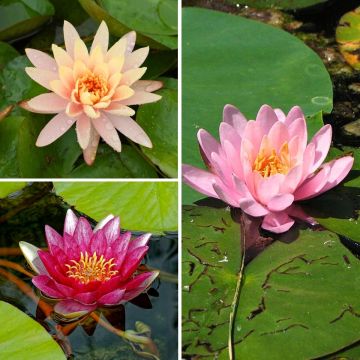
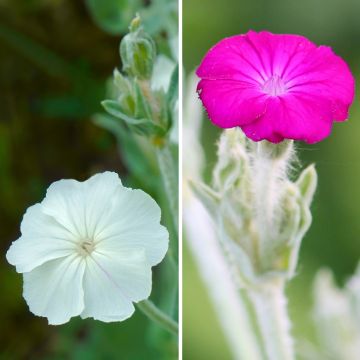


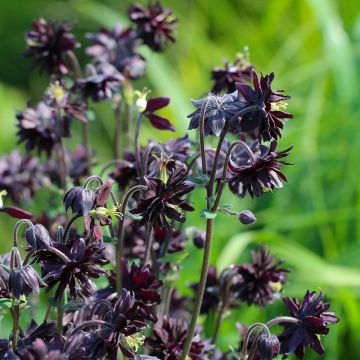
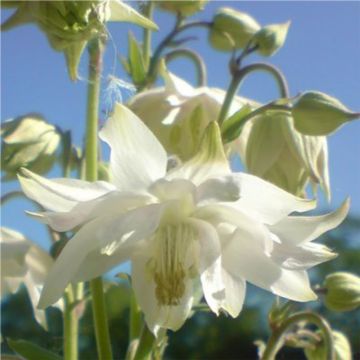
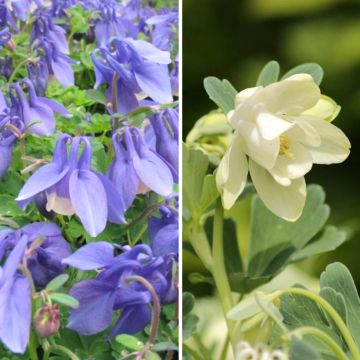
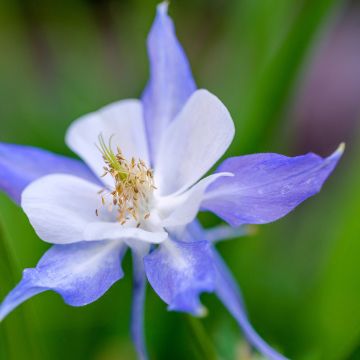
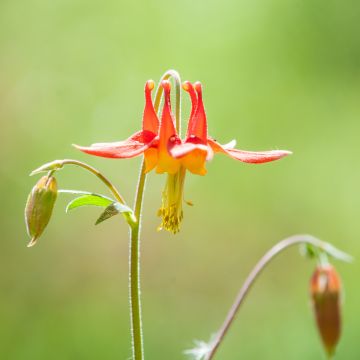
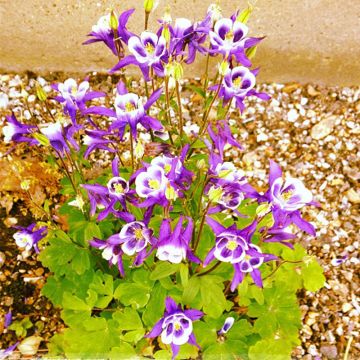
Comments